- Lemon Zucchini Bread Fresh and Flavorful Delight
- No-Bake Orange Creamsicle Truffles Easy Dessert Recipe
- Lemon Poppy Seed Cheesecake Cookies Delightful Snack
- Grilled Cowboy Butter Chicken Skewers Tasty Delight
- Feta Cranberry Penne Salad with Orange Vinaigrette Delight
- Mango Strawberry Sorbet Flavorful Frozen Delight
- Watermelon Sorbet Fresh and Tasty Summer Treat
- Roasted Orange Chicken Flavorful and Juicy Delight
- Hibachi Steak Bowls Flavorful and Easy Weeknight Meal
- Pearl Couscous Chickpea Salad Fresh and Flavorful Dish
- Sweet Mango Sticky Rice Rolls Easy and Tasty Recipe
- Mango Cheesecake Delight Simple and Irresistible Recipe
- Lemon Posset Dessert Simple and Creamy Delight
- Summer Berry Mini Galettes Fresh and Flaky Delight
- Greek Chicken Bowls Energetic and Flavorsome Meal
- Thai Mango Salad Refreshing and Healthy Delight
- Irresistible Caribbean Jerk Chicken and Rice Delight
- Easy Pizza Pasta Bake Quick and Tasty Family Meal
- Juicy Greek Turkey Meatballs Flavorful and Simple Recipe
- Chicken Pesto Pasta Salad Flavorful and Fresh Dish
- Bang Bang Chicken Bowl Flavorful and Easy Recipe
- High Protein Chicken Salad Simple and Tasty Meal
- Mexican Chopped Salad Simple and Fresh Recipe
- Delicious White Peach Mascarpone Tart Easy to Make
- Chicken and Broccoli Rice Bowls Tasty and Easy Meal
- Healthy Chicken Pasta Salad with Avocado Delight
- Lychee Rose Mojito Refreshing Summer Cocktail Delight
- Thai Beef Salad Flavorful and Fresh Delight
- Prosciutto Strawberry Burrata Salad Fresh Delight
- Mini Lemon Blueberry Cheesecakes Irresistible Treat
- Strawberry Lemonade Cookies Refreshing Sweet Treat
- Mediterranean Salad Bowl Fresh and Flavorful Delight
- Japanese Cucumber Salad Delicious and Simple Recipe
- Lemon Basil Sorbet Fresh and Flavorful Delight
- Tomato Peach Burrata Salad Fresh and Tasty Delight
- Hawaiian Chicken with Coconut Rice Flavorful Delight
- Pineapple Chicken Stir Fry Flavorful and Easy Dinner
- Spring Roll Salad with Peanut Sauce Fresh and Tasty
- Honey Sriracha Salmon Bowls Flavorful and Easy Meal
- Mediterranean Brunch Board Flavorful and Fresh Spread
- Easy Cucumber Tomato Onion Salad Fresh and Zesty Dish
- Creamy Mango Ice Cream Delightful and Easy Recipe

![Fresh zucchini gives this bread moisture. I use about one medium zucchini, grated. It adds a nice texture and a subtle flavor. Make sure to squeeze out some excess water after grating. This step keeps the bread from being too wet and helps it rise better. I use one cup of granulated sugar for sweetness. It balances well with the tart lemon. For oil, I prefer half a cup of olive oil. It adds richness without being too heavy. The oil also helps keep the bread moist and tender. You can replace it with another oil, but I find olive oil works best. The lemon juice and zest give this bread its bright flavor. I use a quarter cup of fresh lemon juice and the zest from one large lemon. The zest adds a punch of citrus aroma. This combination makes each bite fresh and lively. You won’t want to skip these ingredients in the full recipe. Start by gathering all your ingredients. You will need 1 cup of grated zucchini, which comes from about 1 medium zucchini. Grate it using a box grater or a food processor. This helps release moisture and flavor into the bread. Next, measure 1 cup of granulated sugar and 1/2 cup of olive oil to keep the bread moist. Grab 2 large eggs, 1/4 cup of freshly squeezed lemon juice, and zest from 1 large lemon. The zest adds a bright taste. For dry ingredients, you need 1 1/2 cups of all-purpose flour, 1 teaspoon of baking powder, 1/2 teaspoon of baking soda, 1/2 teaspoon of salt, and 1/2 teaspoon of ground cinnamon. If you like nuts, get 1/2 cup of chopped walnuts or pecans ready. In a large mixing bowl, combine the grated zucchini and sugar. Mix them well so the sugar starts to dissolve. Next, add the olive oil, eggs, lemon juice, and lemon zest. Whisk these ingredients together until blended. You want a smooth mix that brings out the fresh lemon flavor. This step is key for a light and airy bread. In another bowl, whisk together the dry ingredients: flour, baking powder, baking soda, salt, and cinnamon. Make sure to combine them well to avoid lumps. Gradually add this dry mix to the wet mix. Stir gently until they just come together. Be careful not to overmix; lumps are okay. If you choose to add nuts, fold them in now for extra crunch. Pour the batter into your greased loaf pan. Smooth the top with a spatula. Now, it's time to bake! Follow the [Full Recipe] for detailed baking instructions and enjoy the wonderful aroma that fills your kitchen. Choose firm, shiny zucchini. Look for ones without soft spots or blemishes. Smaller zucchinis work best. They have more flavor and less moisture. One medium zucchini gives you about one cup when grated. Remember, fresh zucchini makes a big difference in taste. When you mix your batter, do it gently. Stir until the dry ingredients just blend in. Overmixing can make your bread tough. It’s okay if a few lumps remain. This keeps your bread light and fluffy. Trust me, the texture will be much better! To check if your bread is done, use a toothpick. Insert it into the center of the loaf. If it comes out clean, your bread is ready. If it has wet batter on it, bake for a few more minutes. Let it cool before slicing. This helps the flavors settle. For more tips, check out the Full Recipe. {{image_2}} You can make your lemon zucchini bread even better by adding nuts or seeds. Chopped walnuts or pecans give a nice crunch. They also add healthy fats and protein. You can mix in about half a cup. Just fold them into the batter gently. If you prefer seeds, try sunflower seeds or pumpkin seeds. They will add a fun twist to the texture. Want to boost the flavor? Adding vanilla extract can enhance the taste. Just a half teaspoon is enough. You could also add warm spices like nutmeg or cardamom. These spices blend well with lemon and zucchini. They give your bread a cozy flavor. Experiment with different amounts to find your perfect mix. A sweet glaze can brighten your bread. Mix powdered sugar with a bit of lemon juice for a quick glaze. Drizzle it on top after the bread cools. You could also use a cream cheese frosting for a richer treat. For a lighter option, sprinkle powdered sugar over the slices. Fresh lemon slices on the plate add a nice touch. For the full recipe, check out the details above. After you bake the lemon zucchini bread, let it cool. Once cool, wrap it tightly in plastic wrap. This keeps the bread fresh. You can also place it in an airtight container. Store it at room temperature for up to three days. If you want to keep it longer, consider freezing it. To freeze lemon zucchini bread, slice it first. Wrap each slice in plastic wrap. Then, place the wrapped slices in a freezer bag. Squeeze out as much air as possible before sealing. This helps prevent freezer burn. You can freeze the bread for up to three months. When you're ready to eat it, just thaw it in the fridge overnight. To reheat the bread, simply take a slice out. Place it on a microwave-safe plate. Heat it in the microwave for about 15 to 20 seconds. If you prefer, you can toast it in a toaster oven. Toasting brings back the fresh, warm taste. Enjoy your delicious lemon zucchini bread fresh, even after storing! For the full recipe, check out the Lemon Zucchini Delight. Yes, you can swap some ingredients in this recipe. For example, you can use coconut oil instead of olive oil. You can also replace granulated sugar with brown sugar for a deeper flavor. If you want a gluten-free option, try a gluten-free flour blend. Just make sure to keep the same ratios. This keeps the bread moist and tasty. To check if the bread is done, use a toothpick. Insert it into the center of the bread. If it comes out clean, your bread is ready. If there are wet crumbs or batter, bake it a little longer. Usually, it takes about 45-50 minutes in the oven. Zucchini bread has some great health perks. Zucchini is low in calories but high in fiber. This helps with digestion and keeps you full. It also has vitamins A and C, which are good for your skin and eyes. Plus, using olive oil adds healthy fats. So, this bread can be a tasty treat that offers nutrition too! For the full recipe, check out the details above. This blog post shared a simple recipe for lemon zucchini bread. We covered key ingredients, including fresh zucchini, sugars, and oils. I gave you step-by-step instructions for easy preparation. Tips helped you select the best zucchini and avoid overmixing. We explored tasty variations to make your bread unique. Lastly, I provided storage advice to keep leftovers fresh. Enjoy making delicious lemon zucchini bread that friends and family will love.](https://mysavedrecipe.com/wp-content/uploads/2025/07/cb975a6e-be5d-40a7-a10c-b98a4e680de5-300x300.webp)
![- 1 cup crushed graham crackers - 1 cup cream cheese, softened - 1/2 cup powdered sugar - Zest of 1 orange - 1/4 cup fresh orange juice - 1 teaspoon vanilla extract - 1 cup white chocolate chips, melted - Orange sprinkles (for garnish) To make No-Bake Orange Creamsicle Truffles, you'll need a few key ingredients. First, the crushed graham crackers give the truffles a nice base and texture. Cream cheese is next, adding creaminess that balances the sweetness. The powdered sugar sweetens the mix, while the zest and juice from the orange bring in that bright, citrus flavor. Vanilla extract adds depth, and melted white chocolate provides a sweet outer layer. Don't forget the orange sprinkles for a fun look! The combination of these ingredients creates a treat that is both tasty and visually appealing. These truffles are simple to prepare. Just gather all the ingredients and follow the steps in the [Full Recipe]. You will love how easy these are to make! - In a large bowl, combine: - 1 cup crushed graham crackers - 1 cup cream cheese, softened - 1/2 cup powdered sugar - Zest of 1 orange - 1/4 cup fresh orange juice - 1 teaspoon vanilla extract Mix these until you get a smooth dough. It should feel soft but not sticky. Use your hands to form small balls, about 1 inch in size. Place those on a lined baking sheet. This part is super fun, and you can even get kids involved! Next, chill the truffles in the fridge for about 30 minutes. This helps them firm up nicely. While they chill, melt 1 cup of white chocolate chips. Heat them in a microwave-safe bowl in 30-second bursts, stirring in between. You want it smooth and shiny. Once the truffles are stiff, take them out. Dip each one into the melted white chocolate, ensuring they are fully coated. Place them back on the lined sheet and sprinkle orange sprinkles on top while the chocolate is still warm. This adds a fun pop of color and zest! Put the tray back in the fridge for an extra 15 minutes. This time allows the chocolate to harden properly. When they are cold and set, they are ready to serve. Enjoy your No-Bake Orange Creamsicle Truffles as a delightful treat! For the full recipe, check out the details above. To make great No-Bake Orange Creamsicle Truffles, your mixture must have the right feel. If it is too sticky, add more crushed graham crackers, about a tablespoon at a time. Mix it until the dough holds together but feels smooth. Chilling is key! Place the truffles in the fridge for 30 minutes. This helps firm them up, making them easier to coat in chocolate. Achieving a smooth chocolate coat is easy if you follow a few steps. First, melt the white chocolate carefully. Use a microwave in 30-second bursts, stirring well in between. This way, you will avoid burning the chocolate. When you dip each truffle, ensure it is fully covered. If you see clumps of chocolate, gently tap the truffle against the side of the bowl to let excess chocolate drip off. Want to take your truffles to the next level? Consider adding a few drops of almond extract. It adds a nice depth to the flavor. You can also try mixing in some finely chopped nuts or shredded coconut for extra texture. These small tweaks can make your truffles even more special. For the full recipe, check out the instructions above! {{image_2}} You can switch up the flavor by using dark or milk chocolate instead of white. This change adds a rich taste. If you want to get creative, consider using fun toppings. Sprinkles, crushed nuts, or even shredded coconut can make your truffles pop. The choice is yours. Want to mix it up? Try using other citrus fruits like lemon or lime. These fruits add a zesty twist to your truffles. You can also add nuts or shredded coconut for a nice crunch. These additions can enhance the texture and flavor greatly. If you're looking for a healthier choice, you can swap cream cheese for Greek yogurt. This change reduces fat while keeping a creamy texture. Lower sugar options are also available. Consider using natural sweeteners like honey or maple syrup. These swaps keep your truffles delicious but a bit lighter. You can find the full recipe online for more ideas. To keep your No-Bake Orange Creamsicle Truffles fresh, store them in an airtight container. This helps keep the moisture in and stops them from drying out. Place a piece of parchment paper between layers if you stack them. It prevents sticking and keeps them nice and smooth. Always store them in the fridge. This helps them stay firm and tasty. You can freeze these truffles for later. To do this, place them in a single layer on a baking sheet and freeze until firm. Then, transfer them to an airtight container or a freezer bag. This way, they won't stick together. When you're ready to eat them, just take out the number you want. Let them thaw in the fridge for a few hours. This keeps the texture nice and prevents melting. In the fridge, these truffles last about a week. If you freeze them, they can last up to three months. Just remember to keep them in the right container! This helps you enjoy your No-Bake Orange Creamsicle Truffles at a later date. Yes, you can use low-fat cream cheese. However, this change may affect the texture and flavor. Low-fat cream cheese is softer and less creamy. Your truffles might not hold their shape as well. They could also lack some richness. If you choose this option, chill the mixture longer before forming the balls. Adjusting sweetness is easy. You can add or reduce powdered sugar in the recipe. If you want it sweeter, add more sugar, one tablespoon at a time. Taste the mixture after each addition. If it's too sweet for you, add a bit more cream cheese to balance it out. Yes, these truffles are great for making ahead. You can prepare them a day or two in advance. Just keep them stored in the fridge. When you are ready to serve, you can dip them in chocolate and add sprinkles. This makes them perfect for parties or gatherings. If you want to change the flavor, you have options. Try using lemon or lime juice for a tart twist. You can also use almond extract for a nutty flavor. Coconut gives a tropical vibe too. Feel free to be creative and mix flavors to find your favorite! These No-Bake Orange Creamsicle Truffles are easy to make and fun to enjoy. We covered all the ingredients needed, preparation steps, and tips to make them perfect. You can customize flavors and coatings to fit your taste. Plus, storing them is simple. Remember, with a few tweaks, these truffles can be a hit at any gathering. Don't hesitate to experiment and find your favorite version. Enjoy making and sharing these delightful treats!](https://mysavedrecipe.com/wp-content/uploads/2025/07/549036e3-4c4e-4b3e-ba9e-92372236a945-300x300.webp)

![To make Grilled Cowboy Butter Chicken Skewers, you need these key ingredients: - 1 lb boneless, skinless chicken thighs - 1/2 cup unsalted butter - 2 tablespoons olive oil - 4 cloves garlic - Fresh herbs: parsley, chives - Spices: smoked paprika, onion powder, cayenne pepper - Salt and pepper - Lemon (zest and juice) - Skewers Each ingredient plays a big role in flavor. The chicken thighs give the dish its heartiness. They stay juicy and tender when cooked. The unsalted butter is the star of the show. It adds richness and depth. Olive oil helps the butter blend well and adds a nice touch. Garlic brings in a punch of flavor that you can't miss. Fresh herbs lift the taste and freshness. The spices, especially smoked paprika, give a warm, smoky note. Don't forget the lemon! It brightens and balances the richness of the butter. Lastly, skewers make it fun and easy to grill. For best results, soak wooden skewers in water first. This helps prevent burning on the grill. For the full recipe, check the detailed cooking steps to bring these flavors together for a tasty delight! To make the Cowboy Butter, gather your ingredients first. In a large bowl, add the softened butter and olive oil. Then, mix in the minced garlic, fresh parsley, and chives. Next, sprinkle in the smoked paprika, onion powder, cayenne pepper, salt, and pepper. Finally, add the lemon zest and juice. - Combining ingredients: Use a fork or spatula to mix everything well. Ensure the butter is smooth and all ingredients are evenly distributed. - Tips for mixing: If the butter is too thick, let it sit at room temperature. This will help with mixing. Take your chicken thighs and place them in the bowl with the Cowboy Butter. Toss the chicken well to coat it fully. - Coating with Cowboy Butter: Make sure every piece is covered. This helps infuse flavor into the chicken. - Recommended marination time: Let the chicken marinate for at least 30 minutes. If you have more time, let it sit for up to 2 hours in the fridge for deeper flavor. Before grilling, you need to preheat your grill. Set it to medium-high heat. If you are using a charcoal grill, wait until the coals are covered with white ash. - Threading the chicken onto skewers: Take the marinated chicken and thread it onto the skewers. Leave some space between each piece for even cooking. - Cooking times and temperature: Place the skewers on the grill and cook for about 12-15 minutes. Turn them occasionally. Check that the chicken reaches an internal temperature of 165°F (75°C). This is a simple way to make tasty grilled chicken skewers. For a full recipe, check the details above. To get perfect grill marks, start by preheating your grill. This ensures even cooking. Keep the grill at medium-high heat. When you place chicken on the grill, do not move it right away. Let it sit for a few minutes. Turn the skewers only after you see nice grill lines. This method helps lock in the flavor. Monitor your grill temperature closely. If the heat is too high, the chicken can burn. If it’s too low, it may cook unevenly. A reliable grill thermometer can help you maintain the right temperature. Feel free to get creative with spices! You might try adding cumin or rosemary for a new twist. If you like heat, consider more cayenne pepper. You can also mix in some lemon pepper for a zesty touch. Don’t forget about leftover Cowboy Butter. Use it to baste the chicken while grilling. This adds a rich taste and keeps the chicken juicy. You can also drizzle it over the finished skewers for extra flavor. Pair your skewers with sides like grilled corn or a fresh salad. These sides complement the chicken well. You might also serve some garlic bread to soak up any leftover Cowboy Butter. For a great presentation, arrange the skewers on a large platter. Drizzle with Cowboy Butter and sprinkle fresh herbs on top. This makes the dish look vibrant and inviting. {{image_2}} You can switch up the proteins in this recipe. Try using shrimp or tofu for a twist. Both options will soak up the Cowboy Butter flavor well. If you want more depth, play with different herbs and spices. Fresh basil or cilantro can add zest. You can even try a dash of cumin for warmth. You don’t have to grill these skewers if you prefer other methods. Oven-baking works great too. Just preheat your oven to 400°F (200°C). Place the skewers on a baking sheet and cook for about 20-25 minutes. You should flip them halfway through to ensure even cooking. Another option is using an air fryer. Set the air fryer to 375°F (190°C) and cook for about 10-12 minutes. This gives you a crispy finish without all the oil. Feeling adventurous? You can make spicy variations by adding more cayenne pepper or even crushed red pepper flakes. For a sweet and tangy version, mix in honey or maple syrup with the Cowboy Butter. This adds a nice contrast to the savory chicken. You can also add a splash of vinegar or lime juice for extra zing. Each variation offers a unique taste experience with the same base recipe. Explore, and enjoy the flavors! For the complete guide on making these delicious skewers, check out the Full Recipe. To keep your Grilled Cowboy Butter Chicken Skewers fresh, use an airtight container. This helps lock in moisture and flavor. Store them in the refrigerator. They will stay good for about 3 to 4 days. If you want to keep them longer, consider freezing. When reheating your skewers, use a low heat setting. This method helps avoid dryness. You can use an oven or a grill. Heat them for about 10 minutes or until warm. If using a microwave, cover them with a damp paper towel. This keeps the chicken moist while heating. To freeze your skewers, wrap them tightly in plastic wrap. Then, place them in a freezer bag. This prevents freezer burn. You can keep them frozen for up to 3 months. When ready to eat, thaw them in the fridge overnight. Then, reheat as needed. Enjoy the flavors of your Cowboy Butter! You can use either wooden or metal skewers. Wooden skewers are great for soaking in water. This helps prevent burning. Metal skewers are durable and easy to clean. They also help the chicken cook evenly. For both types, remember to leave space between the pieces. This ensures even cooking and nice grill marks. Yes, you can grill indoors! Use a grill pan or an electric grill. Both tools give great results. Make sure your kitchen is well-ventilated. This helps reduce smoke. Keep an eye on the heat. You want medium-high heat for the best cooking. The most reliable way is to check the internal temperature. Chicken should reach 165°F (75°C) to be safe. Use a meat thermometer for accuracy. Insert it into the thickest part of the chicken. This method ensures juicy, safe chicken every time. Always practice safe cooking by washing your hands and surfaces after handling raw chicken. To make it gluten-free, check all your ingredients. Ensure your spices and butter do not have gluten. Use gluten-free alternatives if needed. You can also swap regular soy sauce for gluten-free soy sauce. Adjust the cooking workflow by using clean tools and surfaces. This will prevent cross-contamination. Enjoy your tasty Cowboy Butter Chicken Skewers without worry! For the complete recipe, check the [Full Recipe]. In this blog post, we explored a tasty chicken skewer recipe. We covered key ingredients like chicken thighs and Cowboy Butter. You learned to prepare, marinate, and grill for perfect skewers. We shared tips for ideal grill marks and side dish pairings too. Remember, substitutions can keep things fresh, and proper storage keeps leftovers tasty. Enjoy grilling with this recipe and make it your own!](https://mysavedrecipe.com/wp-content/uploads/2025/07/8a48fe73-df6c-4fc2-95a4-a3978cd121f9-300x300.webp)
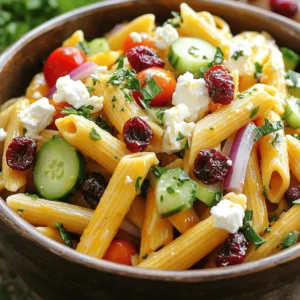

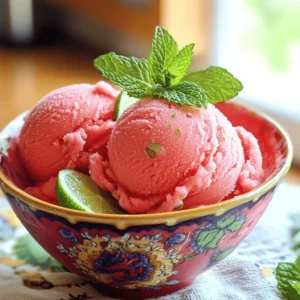

![- 1 pound sirloin steak, cut into bite-sized pieces - 2 cups cooked jasmine rice - 1 tablespoon vegetable oil - 2 cloves garlic, minced - 1 teaspoon fresh ginger, grated - 1 cup broccoli florets - 1 carrot, julienned - 1 zucchini, sliced - 2 tablespoons soy sauce - 1 tablespoon teriyaki sauce - 1 teaspoon sesame oil - 2 green onions, sliced (for garnish) - Sesame seeds (for garnish) Gather these ingredients before you start cooking. The sirloin steak gives a rich flavor. It’s tender and juicy, perfect for hibachi bowls. Jasmine rice adds a nice touch with its fragrance. I like to use fresh veggies like broccoli, carrots, and zucchini. They not only taste great but also add color and nutrients. The sauces are key for flavor. Soy sauce brings saltiness, while teriyaki sauce adds sweetness. Sesame oil rounds out the dish with a nutty taste. Green onions and sesame seeds are the perfect finishing touches, giving texture and crunch. Ready to dive into the cooking? Check out the Full Recipe to see how to bring these ingredients together for a delicious meal. - Combine steak with soy sauce, teriyaki sauce, and sesame oil. - Allow to marinate for at least 15 minutes. Marinating the steak adds rich flavor. The soy sauce gives it saltiness, while teriyaki adds a sweet kick. Sesame oil brings a nutty taste. Make sure to coat every piece well. Letting it sit for 15 minutes helps the flavors sink in. You can marinate it longer if you have time. - Heat vegetable oil in a skillet or hibachi grill. - Sauté garlic and ginger until fragrant. Heat your skillet on medium-high. Add the vegetable oil. Once hot, toss in the minced garlic and grated ginger. Stir for about 30 seconds. You want them fragrant, not burnt. This step builds a great base for your veggies. - Stir-fry broccoli, carrot, and zucchini. - Cook marinated steak until browned. - Combine steak and vegetables. Add the broccoli, carrots, and zucchini to your skillet. Stir-fry for about 4 to 5 minutes. You want them tender but still crunchy. Next, add the marinated steak. Cook for about 4 to 6 minutes until browned. Once done, mix the veggies back in. This melds all the flavors together. - Add jasmine rice to serving bowls. - Top with steak and vegetable mixture. - Garnish with green onions and sesame seeds. Scoop some jasmine rice into each bowl. Then, load it up with the steak and veggie mix. Finally, sprinkle sliced green onions and sesame seeds on top. This adds color and crunch. For the full recipe, check out the [Full Recipe]. For the best hibachi steak, I recommend sirloin or ribeye. These cuts are tender and flavorful. When choosing your steak, look for good marbling. This means small white lines of fat in the meat. They make the steak juicy and tasty. To ensure perfect tenderness, let your steak sit at room temperature for about 30 minutes before cooking. This helps it cook evenly and stay soft. Preparing your veggies right makes a big difference. For carrots, peel them first. Then, slice them into thin strips, called julienne. This helps them cook quickly. For zucchini, cut off the ends, then slice it into rounds. Aim for thin slices for even cooking. Cook broccoli florets for about 4-5 minutes. Carrots and zucchini should cook for the same time. This way, they stay crunchy and vibrant. Marinating your steak boosts flavor. To make it even better, add some garlic or a splash of lime juice. Let your steak marinate for at least 15 minutes. You can go longer if time allows. This helps the flavors soak in. Just remember, don’t marinate too long, or it may become mushy. Your steak deserves that perfect balance of taste and texture. For the full recipe, check out the Hibachi Steak Bowls section above. {{image_2}} You can swap out steak for chicken or tofu. Chicken is lighter and cooks faster. Tofu is great for a plant-based meal. If you use chicken, cut it into small pieces. Cook it for about 5-7 minutes until it's no longer pink. For tofu, press it to remove water, then cut and cook for about 3-5 minutes. This way, you can enjoy a tasty bowl with your favorite protein. Feel free to use seasonal vegetables. This adds freshness and flavor to your dish. Try using bell peppers, snap peas, or asparagus. They cook quickly and add color. You can also mix in mushrooms or corn for extra texture. Just chop them into bite-size pieces, so they cook evenly. Experiment with different sauces to change the flavor. You might try spicy marinades if you like heat. Garlic sauce can add a nice kick too. You can make your own sauces or use store-bought ones for convenience. Just remember, a good sauce brings the whole dish together. Check out the Full Recipe for more details on ingredients and flavors. To keep your hibachi steak bowls fresh, store leftovers in the fridge. Use airtight containers to prevent moisture loss. Glass or BPA-free plastic works best. Make sure to let the dish cool before sealing. This helps maintain the flavor and texture. Consume leftovers within three days for the best taste. For reheating, the stovetop is the best option. It keeps the steak tender and the veggies crisp. Place the bowl in a skillet over medium heat. Stir occasionally until heated through. If using the microwave, remove the lid and cover with a damp paper towel. Heat in short bursts. Check often to avoid overcooking. To freeze hibachi steak bowls, pack them tightly in airtight containers. Leave some space for expansion. You can freeze them for up to three months. When ready to eat, thaw in the fridge overnight. To reheat, use the stovetop for the best results, or microwave if short on time. A hibachi steak bowl is a delicious dish with tender steak and fresh veggies. It often includes jasmine rice as the base. You can add a mix of flavors from soy sauce and teriyaki sauce. The dish is quick to make, so it’s great for busy nights. It's colorful and filling, perfect for any meal. To make hibachi steak bowls healthier, use lean cuts of steak. Substitute brown rice for jasmine rice for more fiber. You can also add more veggies like bell peppers or snap peas. Keep portion sizes small to avoid eating too much. Use less oil when cooking and try to grill instead. Yes, you can make hibachi steak bowls in advance! Cook the steak and veggies, then store them in the fridge. Keep the rice separate to avoid sogginess. You can prep up to three days ahead. Just reheat everything in a skillet or microwave when ready to eat. Many Japanese restaurants offer hibachi steak bowls. Look for places that specialize in hibachi or teppanyaki. Popular chains like Benihana serve similar dishes. You can also find them at food trucks or local eateries. Check online reviews to find the best spots near you. You've learned how to make tasty hibachi steak bowls from scratch. We covered key ingredients, step-by-step cooking, and tips to enhance your meal. Remember, you can switch proteins or veggies to suit your taste. Store leftovers properly, and you can enjoy this dish later. Try experimenting with the flavors based on what you like. Making hibachi steak bowls can be fun and rewarding. Enjoy your cooking!](https://mysavedrecipe.com/wp-content/uploads/2025/07/27751393-57de-4f36-8ce6-5aae3cf82e72-300x300.webp)
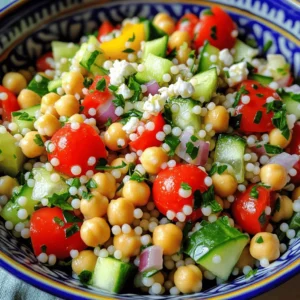


. It includes all the steps and tips for making this treat delicious. Lemon posset is a simple and tasty treat. We covered the key ingredients and a step-by-step guide to make it. Perfect chilling time helps it set just right. You can try different flavors and garnishes for fun twists. Store leftovers in the fridge to keep them fresh. I hope you feel confident to make your own lemon posset. It's a delightful dessert that impresses. Give it a try and enjoy this creamy, tangy treat!](https://mysavedrecipe.com/wp-content/uploads/2025/07/a58dcc0c-c844-4168-8344-2b3db8cd8375-300x300.webp)

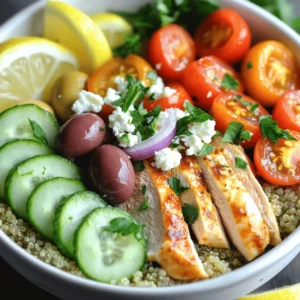
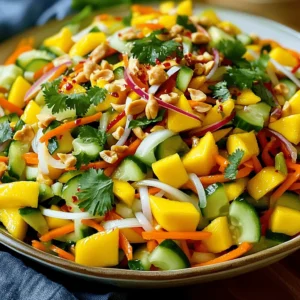

![- 2 cups cooked pasta (penne or rotini) - 1 cup marinara sauce - 1 cup pizza sauce - 1 cup mozzarella cheese, shredded - 1 cup pepperoni slices - 1/2 cup bell peppers, diced (red and green) - 1 teaspoon dried oregano - 1 teaspoon garlic powder - Fresh basil leaves for garnish When making Easy Pizza Pasta Bake, you want to choose your main ingredients wisely. Start with cooked pasta, either penne or rotini. They hold sauces well. Next, marinara sauce adds a rich flavor. Pizza sauce brings in that classic pizza taste. Mix them together to create a base that’s both familiar and comforting. For the best pizza experience, add mozzarella cheese. It melts beautifully and gives that gooey texture we all love. Pepperoni slices add a savory bite. Don't forget the bell peppers. They give color and a sweet crunch. Seasoning is key! Dried oregano and garlic powder enhance the flavor of the dish. Fresh basil leaves add a pop of color and freshness. If you want to make this dish even more exciting, consider adding mushrooms or olives. Now you have the full picture of what goes into this dish. For the complete recipe, check the [Full Recipe]. - Preheat your oven to 350°F (175°C). - In a large bowl, combine the cooked pasta, marinara sauce, and pizza sauce. Stir until mixed well. - Add the cheese, pepperoni, bell peppers, mushrooms, and olives to the pasta. - Season with oregano, garlic powder, salt, and pepper. Mix everything until it looks colorful and tasty. - Transfer the mixture to a greased baking dish. Spread it out evenly. - Cover the dish with aluminum foil and bake for 25 minutes. - Remove the foil and bake for another 10 to 15 minutes, until the cheese is bubbly and golden. This dish is fun to make and tastes great. For the full recipe, check the section above. Enjoy your meal! - Best pasta options for baking: I love using penne or rotini. They hold sauce well and add great texture. These shapes allow for a better mix of flavors and make every bite a delight. - How to achieve golden, bubbly cheese: For the best cheese topping, add a bit more mozzarella before baking. This extra layer gives the dish a nice, golden look. Bake it covered first, then uncover for the last part. This helps the cheese get bubbly and brown without drying out the pasta. - Presentation tips for the dish: Serve the pasta bake right from the dish for a cozy look. Add fresh basil on top for a pop of color. It makes the dish feel special and fresh. - Pairing ideas: This bake goes great with a simple side salad or warm breadsticks. A light salad balances the richness and adds freshness. Breadsticks are perfect for dipping into any extra sauce. - Suggestions for additional toppings: You can spice it up with more toppings. Try adding cooked sausage, fresh spinach, or even jalapeños for heat. Each topping adds a unique twist and makes it your own. - How to customize the recipe to your taste: Don’t hesitate to mix flavors. You can swap out sauces, use different cheeses, or even add veggies you love. Make it fun! The more you personalize it, the more you’ll enjoy your meal. For the full recipe, check out the detailed instructions in the recipe section. {{image_2}} You can easily make this dish vegetarian. Swap the pepperoni for your favorite veggies. Bell peppers, mushrooms, and spinach work great. You can also use alternative cheese options. Try using vegan cheese or ricotta for a creamy touch. For a gluten-free version, use gluten-free pasta. There are many options, like rice or chickpea pasta. Make sure to check the sauce labels too. Some sauces contain gluten, so look for certified gluten-free brands. Want to take it up a notch? You can add different meats. Sausage and chicken are great options. They add richness and depth to the dish. Spice it up with red pepper flakes or Italian seasoning. These add heat and extra flavor. Don't be afraid to mix and match! You can create a new favorite every time you make it. For the full recipe, check [Full Recipe]. To store leftovers properly, let the pasta bake cool down. Place it in an airtight container. This keeps the flavors fresh. Use glass or plastic containers that seal well. You can store it in the fridge for up to three days. Freezing the pasta bake is easy. First, let it cool completely. Then, wrap it tightly in plastic wrap. For best results, cover that with aluminum foil. This helps protect it from freezer burn. You can freeze it for up to three months. When ready to eat, thaw it overnight in the fridge. For reheating, the oven works best. Preheat it to 350°F (175°C). Place the pasta bake in a covered dish. Bake for about 20 minutes. This keeps the texture nice. You can also use the microwave for quick reheating. Just make sure to cover it to avoid dryness. Enjoy your cheesy pizza pasta bake warm and delicious! This dish takes about 15 minutes to prep and around 35 minutes to bake. In total, you will spend about 50 minutes from start to finish. This makes it a great option for busy weeknights or family get-togethers. Yes, you can prepare the Easy Pizza Pasta Bake ahead of time. You can mix the pasta with sauces and toppings. Store it in the fridge for up to 24 hours before baking. Just cover it tightly with foil or plastic wrap. If you want to keep it longer, you can freeze it for up to three months. Just thaw it overnight before baking. If you don’t have marinara sauce, you can use several alternatives. Pizza sauce works well because it adds a nice flavor. You can also try Alfredo sauce for a creamy twist. Another option is pesto, which gives the dish a fresh taste. Just make sure the sauce you choose pairs well with the other flavors. Absolutely! You can make the Easy Pizza Pasta Bake dairy-free. Use dairy-free cheese or skip the cheese altogether. For creaminess, consider adding cashew cream or coconut cream. These options keep the dish rich while catering to dietary needs. Just check the labels to ensure they are dairy-free. You now know how to make an Easy Pizza Pasta Bake. With simple ingredients and easy steps, it’s a dish anyone can master. Customize it to fit your taste with different toppings or sauces. Store leftovers correctly for later enjoyment. This recipe is fun to make and share. I hope you enjoy this dish as much as I do. Happy cooking!](https://mysavedrecipe.com/wp-content/uploads/2025/07/7f71e629-b6fb-46f0-b2de-6285b389047d-300x300.webp)

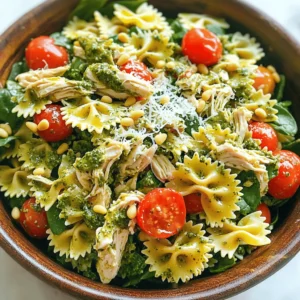

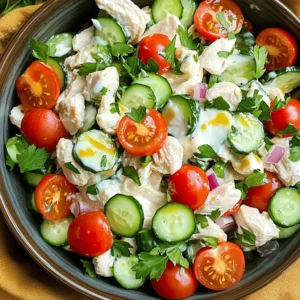
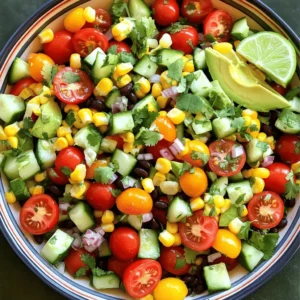
![- Pre-made tart shell (9-inch) - Ripe white peaches - Mascarpone cheese - Heavy cream - Powdered sugar - Vanilla extract - Lemon zest - Fresh mint leaves for garnish - Optional: Honey For this delightful White Peach Mascarpone Tart, you need simple yet fresh ingredients. The pre-made tart shell saves time and lets you focus on flavors. Ripe white peaches add sweetness and a lovely aroma. Mascarpone cheese makes the filling rich and creamy. Heavy cream helps it become light and fluffy. Using powdered sugar gives the filling a sweet touch. Vanilla extract enhances the taste, while lemon zest adds brightness. Fresh mint leaves not only look great but also bring a cool flavor. If you want extra sweetness, honey is a great option. Gather these ingredients, and you will be ready to create a stunning dessert. For the complete directions, check the Full Recipe. To start, gather your ingredients. First, combine the mascarpone cheese and heavy cream in a medium bowl. Then, add the powdered sugar, vanilla extract, and lemon zest. Mix these together using a hand mixer or whisk. Beat the mixture until it becomes light and fluffy, about 2-3 minutes. This fluffy filling is what makes the tart so delicious. Next, carefully pour the mascarpone filling into the pre-made tart shell. Spread it evenly, making sure every corner is filled. Now, take your ripe white peaches and slice them thinly. Arrange the peach slices on top of the mascarpone layer. Overlap them slightly for a nice look. If you want a touch of sweetness, drizzle a bit of honey over the peaches. Now, it’s time to chill the tart. Place it in the refrigerator for at least 1 hour. This helps all the flavors blend well. When ready to serve, garnish the tart with fresh mint leaves. They add a pop of color and flavor. For the full recipe, check out the link. Enjoy your beautiful tart! - Beating mascarpone for optimal fluffiness: To get the best texture, beat mascarpone with heavy cream. Use a hand mixer for about 2-3 minutes. This makes the filling light and airy. - Choosing the best white peaches: Pick ripe white peaches that are soft but not mushy. Look for a sweet scent. The best peaches add flavor and color to your tart. - Tips for a smooth filling: Ensure all ingredients are at room temperature. This helps them mix well. Sift the powdered sugar to avoid lumps. A smooth filling looks great and tastes better. - Using powdered sugar for dusting: Just before serving, dust the tart with powdered sugar. This adds a sweet touch and makes the tart look fancy. - Arranging peaches artfully: Place the peach slices in a pattern. Overlap them slightly for a beautiful design. This makes your tart more inviting. - Slicing and serving tips: Use a sharp knife to cut the tart into wedges. Serve each piece with extra peach slices on the side. This adds freshness and color to your plate. For the full recipe, check out the White Peach Mascarpone Tart . {{image_2}} You can switch up the flavor of your tart by using different fruits. Try ripe strawberries or juicy blueberries. They add a nice color and taste. You can also mix fruits. A peach and raspberry combo makes a great choice. Adding spices can make your tart even more special. A dash of cinnamon or nutmeg gives warmth. You might like a hint of fresh basil or mint for a herbal twist. Just a little can make a big impact. If you want a vegan version, swap the mascarpone cheese for tofu. Blend silken tofu with a bit of lemon juice and maple syrup. It’s creamy and delicious! Use coconut cream for the heavy cream. It adds a nice flavor too. For those who need gluten-free options, look for a gluten-free tart shell. Many stores sell them now. You can also make your own with almond flour or oats. It’s easy and tastes great! Check out the Full Recipe for more ideas on how to make this tart your own! To keep your White Peach Mascarpone Tart fresh, store it in the fridge. Place it in an airtight container. This helps prevent moisture loss and keeps the tart from absorbing other smells. If you use a pie dish, cover it tightly with plastic wrap. This works well too! If you want to freeze the tart, slice it first. Wrap each slice in plastic wrap. Place the slices in a freezer-safe bag to avoid freezer burn. When you’re ready to enjoy it, remove a slice and let it thaw in the fridge overnight. This keeps the flavors intact and the texture nice. Always serve it chilled for the best taste! How long can the tart be stored in the fridge? You can keep the tart in the fridge for up to three days. Make sure to cover it well. This keeps the tart fresh and tasty. After a few days, the peaches might get soft. Can I use other types of cheese instead of mascarpone? Yes, you can use cream cheese or ricotta. These cheeses will change the flavor a bit. Cream cheese is tangy, while ricotta is light and fluffy. Both are great choices if you want to mix it up! What’s the best way to cut the tart? Use a sharp knife for clean slices. Dip the knife in hot water, then dry it before cutting. This will help with cutting through the peaches and cream. Cut slowly and gently to keep the layers intact. For the full recipe and more tips, check out the [Full Recipe]. This blog post covered a delicious peach tart made with simple ingredients. You learned how to create a fluffy mascarpone filling, arrange peaches beautifully, and chill your tart. I shared tips to elevate your presentation and variations for different diets. For a sweet treat, this tart is easy and fun to make. Enjoy it fresh or store it for later. With this guide, you're all set to impress anyone with this tasty dessert!](https://mysavedrecipe.com/wp-content/uploads/2025/07/f7ac7424-1f33-4e0b-b8dd-ef81b079e865-300x300.webp)

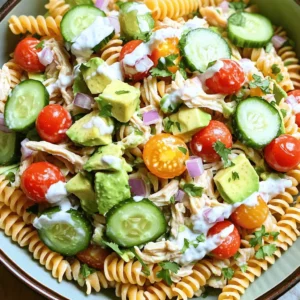

![- 1 pound beef sirloin, thinly sliced - 2 tablespoons fish sauce - 1 tablespoon lime juice - 1 tablespoon palm sugar (or brown sugar) - 1 clove garlic, minced - 1 teaspoon chili flakes (adjust to taste) - 2 cups mixed salad greens (arugula, spinach, and lettuce) - 1 cucumber, thinly sliced - 1 red bell pepper, thinly sliced - 1 carrot, julienned - 1/4 cup fresh cilantro, chopped - 1/4 cup fresh mint leaves, chopped - 1 tablespoon roasted peanuts, crushed (for garnish) To make the Thai Beef Salad, gather these fresh ingredients. Each one plays a key role in the dish's vibrant flavor. The beef sirloin gives the salad a hearty base. Fish sauce adds depth, while lime juice brightens every bite. Palm sugar balances the salty and sour notes. Garlic and chili flakes bring warmth and aroma. The mixed greens create a crunchy backdrop. The cucumber and bell pepper add refreshing crispness. Carrots provide a sweet crunch. Fresh herbs like cilantro and mint elevate the dish with their unique tastes. Finally, crushed peanuts give a satisfying crunch. This mix of ingredients results in a colorful and tasty meal. You can find the full recipe to create this delightful dish. Enjoy the bold flavors and fresh ingredients in your Thai Beef Salad! Start by whisking together these ingredients in a bowl: - 2 tablespoons fish sauce - 1 tablespoon lime juice - 1 tablespoon palm sugar (or brown sugar) - 1 clove garlic, minced - 1 teaspoon chili flakes (adjust to taste) This mixture is your marinade. It adds a lot of flavor to the beef. Next, place the thinly sliced beef in the bowl. Make sure each piece gets coated well. Let the beef sit in the marinade for at least 15 minutes. If you have time, one hour in the fridge gives better taste. While the beef marinates, get your salad ready. In a large bowl, combine these fresh ingredients: - 2 cups mixed salad greens (arugula, spinach, and lettuce) - 1 cucumber, thinly sliced - 1 red bell pepper, thinly sliced - 1 carrot, julienned Toss the greens and veggies gently. Set the bowl aside so the flavors can blend. Now, it's time to cook the beef. Heat a grill pan or skillet over medium-high heat. Take the marinated beef out and discard the leftover marinade. Grill or sauté the beef slices for about 2-3 minutes on each side. You want them cooked but still juicy. Once done, remove the beef from the heat. Let it rest for a minute. Then, slice the beef into thin strips. Add these strips to your salad bowl along with fresh cilantro and mint. Toss everything together gently. Serve immediately. If you want, top with crushed roasted peanuts for a nice crunch. For the full recipe, refer to the above instructions. Enjoy! To make your Thai Beef Salad shine, start with the marinade. Adjust the level of chili flakes for spice. If you love heat, add more flakes. For a milder taste, use less. Letting the beef marinate longer brings out great flavors. I recommend 15 minutes at room temperature or up to an hour in the fridge. This helps the beef soak up the flavors. When cooking the beef, use high heat. This gives it a nice sear and keeps it juicy. A cast iron skillet works well for even cooking. It holds heat well, so your beef cooks perfectly. Don’t overcrowd the pan; cook the beef in batches if needed. This step is key to achieving that perfect texture. Serve your Thai Beef Salad with jasmine rice or rice noodles for a satisfying meal. These sides complement the fresh flavors of the salad. For added taste, offer toppings like sliced avocado. It adds creaminess to the crunchy salad. You can also sprinkle crushed peanuts on top for extra crunch. Enjoy the burst of flavors in every bite! For the full recipe, check the main section. {{image_2}} You can easily change the main protein in this dish. Swap beef for grilled chicken or tofu for a tasty vegetarian option. This keeps the dish light and fresh. If you want a zesty boost, add lime zest to your marinade. This small change can brighten the whole dish. For a different twist, consider adding sesame oil or soy sauce to the dressing. Both options bring a nutty flavor that pairs well with the other ingredients. You can also try using fresh herbs like basil instead of cilantro or mint. This adds a unique touch that makes the salad your own. Using seasonal vegetables can make your salad even fresher. Think about adding crisp radishes or colorful cherry tomatoes. They not only taste great but also add visual appeal. For a sweet note, toss in seasonal fruits like mango. The sweetness from the fruit balances the lime and fish sauce perfectly. For the complete recipe, check out the [Full Recipe]. Store any leftovers in an airtight container. This keeps them fresh and tasty. For the best taste, eat them within 2 days. This way, you enjoy the full flavor of your Thai Beef Salad. If you want to save some for later, freeze the beef separately from the salad. This helps keep the salad fresh. When you're ready to eat, thaw the beef in the refrigerator. This slow method keeps the taste and texture just right. To reheat the beef, use a skillet or microwave. This warms it up nicely without drying it out. Do not reheat the salad greens. They lose their crunch and freshness if heated. Enjoy your meal at its best! For the complete recipe, check out [Full Recipe]. Thai Beef Salad is a fresh, vibrant dish from Thailand. This dish features tender beef, crisp veggies, and a zesty dressing. The flavors blend sweet, sour, salty, and spicy notes. Traditionally, it's enjoyed as a light meal or appetizer. Its origins stem from Thai street food, where balance in flavors is key. To add heat, you can increase the chili flakes in the marinade. Start with a teaspoon and add more if you like. Fresh Thai bird's eye chilies can also spice things up. Slice them thinly and mix them into the salad. Yes, you can prep elements in advance. Marinate the beef a few hours before cooking for better flavor. Chop the veggies and store them in the fridge to keep them fresh. Mix everything together just before serving for the best taste. This salad pairs well with jasmine rice or rice noodles. You can also serve it alongside spring rolls or satay skewers. These options complement the salad's flavors and make a complete meal. You can swap the beef for grilled chicken or tofu for a vegetarian dish. Add fruits like mango for sweetness or use lime zest for extra flavor. Play with herbs too; basil or cilantro can give it a unique twist. This salad is packed with nutrients. Beef adds protein and iron, while veggies provide vitamins and fiber. The dressing offers healthy fats from fish sauce and fresh herbs. Overall, it's a balanced dish that is both tasty and good for you. Enjoy this dish with the full recipe for a delightful experience! In this post, we covered how to make Thai Beef Salad. You learned about the key ingredients, marinating tips, and cooking steps. Remember, feel free to adjust spice levels and swap ingredients to suit your taste. Keep your leftovers fresh by storing them properly. Whether you're serving it with rice or adding seasonal fruits, this salad is versatile. Enjoy making it your own and impressing friends and family with bold flavors.](https://mysavedrecipe.com/wp-content/uploads/2025/07/266fddc1-3219-4022-a216-29ecf0d7f6cd-300x300.webp)
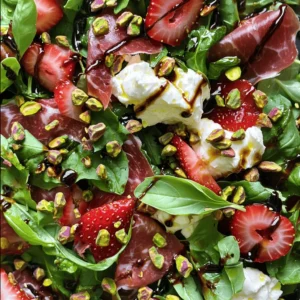
. - Overmixing batter: This can make the texture tough. Mix just until smooth. - Not cooling properly: Let the cheesecakes cool before chilling. This helps set their shape. - Use room temperature ingredients: Cold cream cheese will not mix well. It needs to be soft. - Avoid overbaking: Bake until the centers are slightly jiggly. They will firm up as they cool. - Best served chilled: Chilling enhances the flavors and makes them refreshing. - Pair with homemade whipped cream: A dollop of whipped cream adds richness and a nice touch. Enjoy these tips to make the best mini lemon blueberry cheesecakes. Check out the Full Recipe for more details! {{image_2}} You can easily switch things up with your mini lemon blueberry cheesecakes. Instead of blueberries, try using raspberries or strawberries. These fruits add a nice twist to your dessert. You can also add chocolate chips or nuts. Dark chocolate adds richness, while nuts give a lovely crunch. Just fold them into the batter gently. If you need a gluten-free option, use gluten-free graham cracker crumbs. These work just like regular crumbs for the crust. For a dairy-free twist, substitute cream cheese with a dairy-free cream cheese. You can also use cashew cream for a smooth texture. These choices keep the flavor tasty for everyone. If you’re hosting a larger gathering, you can double the recipe. This will give you about 24 mini cheesecakes. To make one full cheesecake, use a 9-inch springform pan. Simply pour the batter into the pan after mixing. Bake it for 45-55 minutes instead of 20-25 minutes. This will create a lovely, creamy cheesecake that everyone will love. For more details, check the Full Recipe. To keep your mini lemon blueberry cheesecakes fresh, refrigerate them right away. Place them in an airtight container. This keeps moisture in and prevents them from drying out. They stay fresh for about 3 to 4 days. If you want to enjoy them longer, use plastic wrap before sealing. This adds an extra layer of protection. You can freeze mini cheesecakes for later enjoyment. First, let them cool completely. Then, wrap each cheesecake tightly in plastic wrap. After that, put them in a freezer-safe bag or container. This prevents freezer burn. They can last up to 2 months in the freezer. When you're ready to eat them, take them out and thaw in the fridge overnight. This keeps their texture smooth and creamy. Mini cheesecakes are best eaten within a week. After that, they may still be safe but lose quality. Look for changes in texture or smell to tell if they've gone bad. If they become watery or smell sour, it’s time to toss them. Enjoy these treats while they’re at their best! You can tell mini cheesecakes are done by looking for visual cues. The edges should be set, while the center may jiggle slightly. A toothpick test works well too; insert it into the center. If it comes out clean or with a few moist crumbs, they are ready. Keep an eye on the baking time. They usually bake for 20-25 minutes at 325°F (160°C). Yes, you can make the cheesecake batter in advance. Store it in the fridge for up to 24 hours. Just keep it in a sealed container. When you're ready to bake, give it a quick stir. This helps to mix any ingredients that may have settled. It's a great way to save time on busy days. If you need a substitute for sour cream, there are several options. Greek yogurt works well and gives a similar tang. You could also use cream cheese thinned with a bit of milk. Another option is buttermilk, which adds moisture and flavor. Choose what fits your taste or what you have on hand. This blog post shared how to make tasty mini cheesecakes. You learned about key ingredients, like graham cracker crumbs and cream cheese, and how fresh blueberries add flavor. I provided step-by-step instructions for perfecting your cheesecakes and offered tips to avoid common mistakes. Whether you're making variations for special diets or just for fun, you'll impress your friends. Remember to store them well for freshness. Enjoy your baking adventure and savor every bite of your delicious creation!](https://mysavedrecipe.com/wp-content/uploads/2025/07/afd2eeb2-324e-43dd-bdee-e695502af599-300x300.webp)

![Let’s dive into the ingredients for the Mediterranean Salad Bowl. Each one adds flavor and nutrition. You can find all these items at your local grocery store. - Quinoa - Fresh vegetables (cherry tomatoes, cucumber, red bell pepper, red onion) - Canned chickpeas - Kalamata olives and feta cheese - Dressing components (olive oil, lemon juice, oregano, salt, and pepper) Quinoa is a great base for this salad. It is light, fluffy, and packed with protein. The fresh vegetables bring color and crunch. Cherry tomatoes offer sweetness, while cucumber cools the dish. Red bell pepper gives a hint of warmth, and red onion adds a bit of bite. Chickpeas are a must for heartiness. They are full of fiber and keep you full longer. Kalamata olives add a briny flavor that balances the sweetness of the veggies. Feta cheese gives a creamy, tangy kick to each bite. Now, let’s talk about the dressing. Olive oil adds richness. Lemon juice brightens up the flavors and adds zest. Oregano gives an earthy note, while salt and pepper round everything out. For the full recipe, check out the details above, and get ready to create a fresh and flavorful Mediterranean Salad Bowl that you will love! First, grab a medium pot. Bring 2 cups of vegetable broth or water to a boil. I always use broth for added flavor. This step is quick and easy. Once boiling, add 1 cup of rinsed quinoa. Lower the heat to a simmer. Cover the pot and cook for about 15 minutes. The quinoa will absorb the liquid and become fluffy. After cooking, remove it from heat and let it cool. While the quinoa cools, get a large mixing bowl. In this bowl, mix together the following ingredients: - 1 cup cherry tomatoes, halved - 1 cucumber, diced - 1 red bell pepper, diced - ½ red onion, finely chopped - 1 cup canned chickpeas, drained and rinsed - ½ cup Kalamata olives, pitted and halved - ¼ cup fresh parsley, chopped Now, for the dressing! In a small bowl, whisk together: - 3 tablespoons olive oil - 2 tablespoons lemon juice - 1 teaspoon dried oregano - Salt and pepper to taste Make sure to whisk until smooth. This dressing will tie all the flavors together. Once the quinoa has cooled, add it to the vegetable mixture. Pour the dressing over everything and toss gently. You want to mix well but avoid breaking the quinoa. Finally, sprinkle ½ cup of crumbled feta cheese on top. Give it one last light toss. This adds flavor and creaminess. Taste it and adjust seasoning with salt and pepper if needed. For the full recipe, check out the Mediterranean Bliss Bowl. Enjoy your fresh and colorful salad bowl! To make the best Mediterranean salad bowl, focus on the quinoa first. - Achieving the right quinoa texture: Rinse your quinoa well before cooking. This removes bitterness. Cook it in vegetable broth for flavor. It should be fluffy, not mushy. Once done, let it cool before mixing. - Balancing flavors in the dressing: Mix olive oil and lemon juice for a bright taste. Add dried oregano for a hint of earthiness. Taste it before pouring over the salad. Adjust salt and pepper to your liking. - Mixing techniques for even distribution: Start by combining your vegetables in a big bowl. Once mixed, gently fold in the quinoa. Use a spatula to avoid breaking the feta. This keeps everything well distributed and looking pretty. A beautiful salad bowl makes your meal more inviting. - Serving suggestions for a beautiful display: Use clear glass bowls to show off the colors. Layer the ingredients to create a visual feast. - Garnishing with herbs or lemon wedges: Fresh parsley adds a pop of green. A lemon wedge on the side brightens the dish. It also invites people to squeeze some juice over the salad. - Bowl alternatives for serving: Try using rustic wooden bowls for a homey feel. You can also use large lettuce leaves as edible bowls. They add flavor and fun to your meal. These tips will help you create a Mediterranean salad bowl that impresses everyone. For full details on making this dish, check out the Full Recipe. {{image_2}} You can make your Mediterranean salad unique. Start by adding proteins. Grilled chicken or shrimp brings great flavor and fills you up. You can also mix in different vegetables. Try creamy avocado or sweet roasted red peppers. They add a nice twist to the bowl. If you prefer vegan options, no problem! You can leave out feta cheese or swap it for vegan cheese. This way, everyone can enjoy the salad, no matter their diet. This salad fits many diets. If you're gluten-free, quinoa is a perfect base. It has no gluten and is very nutritious. You can also make low-carb versions. Just skip the chickpeas or reduce the amount of quinoa. Key ingredients in this salad offer many benefits. Quinoa is high in protein and fiber. Fresh vegetables add vitamins and minerals. Chickpeas boost your energy and are great for your heart. Every bite is not just tasty; it's good for you too! For the full recipe, check out the Mediterranean Bliss Bowl 🥗. To keep your Mediterranean salad fresh, store it in an airtight container. This helps prevent sogginess. I recommend using glass or BPA-free plastic containers. They keep the taste and texture better than other options. You can store the salad in the fridge for up to three days. If you add dressing, eat it within two days. The veggies stay crisp when stored without dressing. This makes it easier to enjoy later. Can you freeze the Mediterranean salad? I don’t recommend freezing it. Freezing can change the texture of veggies and chickpeas. They may become mushy when thawed. If you still want to freeze it, leave out the fresh ingredients like tomatoes, cucumber, and feta cheese. These items do not freeze well. To thaw, place the container in the fridge overnight. Refresh the salad by adding fresh veggies and a splash of lemon juice before serving. This adds life back to your dish. To make a Mediterranean salad from scratch, follow these simple steps: 1. Cook the quinoa: Start by boiling vegetable broth or water. Add 1 cup of rinsed quinoa. Lower the heat, cover it, and simmer for 15 minutes. This makes the quinoa fluffy. 2. Prepare the veggies: While the quinoa cooks, chop fresh vegetables like cherry tomatoes, cucumber, red bell pepper, and red onion. 3. Mix ingredients: In a large bowl, combine the chopped veggies with canned chickpeas and Kalamata olives. 4. Make the dressing: In a small bowl, whisk together olive oil, lemon juice, dried oregano, salt, and pepper. 5. Combine everything: Once the quinoa cools, add it to the veggie mix. Drizzle the dressing over and toss gently. 6. Add feta: Sprinkle crumbled feta cheese on top and mix lightly. This approach gives you a fresh and tasty salad, perfect for any meal. You can find the full details in the [Full Recipe]. A Mediterranean salad features classic ingredients that bring vibrant flavors. Here’s an overview of the essentials: - Quinoa: This grain provides a healthy base and nutty flavor. - Fresh vegetables: Cherry tomatoes add sweetness, while cucumber and red bell pepper offer crunch. - Red onion: It gives a sharp bite to balance the flavors. - Canned chickpeas: These are packed with protein and add a creamy texture. - Kalamata olives: They add a briny taste that enhances the salad. - Feta cheese: This crumbly cheese provides a rich flavor and creaminess. - Dressing: Olive oil, lemon juice, oregano, salt, and pepper create a zesty finish. These ingredients combine to create a colorful and healthy dish. Yes, you can use different grains instead of quinoa! Here are some great substitutes: - Couscous: It cooks quickly and has a light, fluffy texture. - Bulgur: This grain is hearty and has a slightly nutty taste. - Farro: It adds a chewy texture and rich flavor. - Brown rice: This is a gluten-free option that works well too. Feel free to experiment with these grains while keeping the rest of your salad the same! This Mediterranean salad is fresh, tasty, and easy to make. You learned how to cook quinoa and mix it with vibrant veggies and chickpeas. The dressing adds a zesty kick while feta cheese gives richness. You can customize it with proteins or different veggies for variety. Remember to store leftovers correctly and enjoy them later! This salad fits many diets and flavors. Using my tips will help you make the perfect bowl. Enjoy your healthy creation!](https://mysavedrecipe.com/wp-content/uploads/2025/07/b6357731-79d1-4ad7-82e1-3ba8f5c134de-300x300.webp)
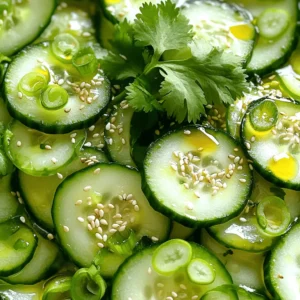

![- 2 large heirloom tomatoes, sliced - 2 ripe peaches, pitted and sliced - 1 ball of fresh burrata cheese - 1/4 cup fresh basil leaves, torn - 2 tablespoons balsamic glaze - 2 tablespoons extra virgin olive oil - Salt and freshly cracked black pepper to taste If you can't find heirloom tomatoes, try using vine-ripened tomatoes. They have good flavor too. For cheese, you can use fresh mozzarella instead of burrata. It will still taste great! In different seasons, swap peaches for nectarines or even plums. Each fruit adds its own twist to the salad. To pick ripe peaches, look for ones that feel soft but not mushy. They should smell sweet. For burrata, choose cheese that feels soft and creamy. Fresh burrata should have a smooth surface. When selecting tomatoes, look for ones that are firm and have bright colors. Avoid any that feel too hard or have blemishes. First, wash the heirloom tomatoes and peaches under cold water. Make sure to remove any dirt. Pat them dry with a clean kitchen towel. This step helps keep your salad fresh and clean. Next, slice the heirloom tomatoes into thick rounds. For the peaches, cut them into wedges. This makes them easy to layer later. Now, let’s build the salad. On a large serving platter, alternate layering the sliced tomatoes and peaches. Create a circular pattern for a nice look. This makes for a beautiful presentation. Then, gently tear the burrata cheese into pieces. Place it right in the center of the platter. Let it ooze slightly for a creamy effect that everyone will love. To finish, drizzle balsamic glaze and extra virgin olive oil over the entire salad. This adds a rich flavor and shine. Don't forget to season it with salt and freshly cracked black pepper to taste. These final touches will enhance the taste and make it pop. For the full recipe, check out the complete guide to make this delightful dish. To impress your guests, focus on how you present the salad. Start with a large, white platter. This helps the colors pop. Arrange the tomato and peach slices in a circular pattern. Alternate colors for a striking look. Place the burrata cheese in the center. Let it ooze slightly for a creamy touch. Add torn basil leaves on top for a fresh green accent. Drizzle balsamic glaze and olive oil for a glossy finish. This not only looks good but adds flavor too! You can prep this salad ahead of time. Start by washing and slicing the tomatoes and peaches. Store them in separate containers in the fridge. This keeps them fresh and crisp. On the day you serve, layer the tomatoes and peaches on your platter. Add the burrata and basil last. Drizzle the oils and season just before serving. This keeps the salad looking fresh and vibrant. This salad pairs well with crusty bread or a light white wine. A chilled Sauvignon Blanc complements the sweetness of the peaches. You can serve it at summer picnics, family gatherings, or casual dinners. It’s a great dish for any occasion! Enjoy the bright flavors and fresh ingredients. The Tomato Peach Burrata Salad is sure to delight everyone at your table. For the complete recipe, check out [Full Recipe]. {{image_2}} You can change up the flavor of your salad easily. Adding nuts or seeds gives a nice crunch. I recommend using toasted pine nuts or sliced almonds. They add texture and flavor. You can also use sunflower seeds for a nut-free option. Herbs and spices can change the taste too. Try adding a sprinkle of chili flakes for heat. You can also use mint or arugula for a fresh twist. Each herb brings its own unique flavor to the dish. If you're vegan, you can swap the burrata cheese for tofu. Silken tofu works well for a creamy texture. Make sure to season it with some salt and lemon juice. This keeps the salad tasty and plant-based. For gluten-free options, this salad is naturally gluten-free! Just ensure your balsamic glaze does not contain any gluten. You can enjoy this dish without any worries. The best time to use summer produce is during peak season. Fresh peaches and tomatoes taste amazing when they are in season. You can also experiment with autumn fruits. Try pears or apples for a different flavor profile. Switching fruits based on the season keeps the salad fresh. Each season brings new tastes and colors. Use whatever is ripe and available for the best results. To keep your Tomato Peach Burrata Salad fresh, follow these steps: - Place any leftover salad in an airtight container. - Cover the salad tightly to keep out air. - Store in the fridge for best results. Avoid mixing the salad with the dressing if you want it to last longer. This salad lasts about 2 days in the fridge. Look for these signs to know if it has gone bad: - The tomatoes and peaches become mushy. - The burrata cheese smells sour. - The salad looks dry or discolored. You can repurpose leftover ingredients easily! Here are some fun ideas: - Mix leftover burrata into pasta for a creamy dish. - Use extra peaches in smoothies or desserts. - Toss leftover tomatoes into a quick omelette. These quick recipes make your leftovers shine! Burrata cheese is a fresh Italian cheese. It has a soft outer shell and a creamy inside. The flavor is rich and buttery, making it a perfect match for salads. When you slice it, the creamy center oozes out, adding a delightful texture. This cheese pairs well with fruits, like peaches and tomatoes, enhancing their sweetness. Yes, you can prepare the salad in advance. However, wait to add the burrata until right before serving. To keep the flavors fresh, store the tomatoes and peaches in a covered bowl. Add the dressing just before serving to avoid soggy fruit. This way, your salad stays crisp and tasty. For this salad, I love using a balsamic vinaigrette. It adds a sweet and tangy touch. You can also try a simple olive oil and lemon juice mix. Both options complement the flavors of the peaches and tomatoes. Feel free to experiment with herbs for extra flavor. When selecting peaches, look for a deep yellow or golden color. They should feel slightly soft when you gently press them. Avoid peaches with green spots, as they may not be ripe. A sweet aroma is also a good sign that they are ready to eat. This blog post covered the ingredients and steps for a fresh salad. You learned how to choose ripe peaches and fresh burrata, and we explored ingredient swaps. I shared tips for assembling and presenting the salad, plus variations to suit your taste. Consider trying different fruits or cheeses based on the season. Enjoy the flavors of summer with this bright dish. It’s easy to make and perfect for any gathering. Your kitchen can be a place of creativity and fun!](https://mysavedrecipe.com/wp-content/uploads/2025/07/c5acc8a3-47f3-4c40-9ff8-5fa2ab3e4a66-300x300.webp)
![- 4 boneless chicken thighs - 1 cup pineapple juice - 2 tablespoons soy sauce - 2 tablespoons honey - 1 teaspoon grated ginger - 2 cloves garlic, minced - 1 teaspoon sesame oil - 1 bell pepper (red or yellow), sliced - 1 cup cherry tomatoes, halved - Fresh cilantro, for garnish - Salt and pepper to taste - 1 cup jasmine rice - 1 cup coconut milk - 1/2 cup water - Pinch of salt When I make Hawaiian chicken with coconut rice, I start with fresh, simple ingredients. Each one plays a big role in the dish. For the chicken, I use boneless thighs. They stay juicy and tender. Pineapple juice adds a sweet and tangy flavor. Soy sauce brings in some salty depth. Honey adds sweetness and helps caramelize the chicken. Grated ginger and minced garlic offer warmth and spice. Sesame oil gives a nutty taste. I love to add colorful bell peppers and cherry tomatoes for a fresh crunch. Finally, I always garnish with fresh cilantro for a burst of flavor. For the coconut rice, I choose jasmine rice. It has a lovely aroma and texture. The creamy coconut milk replaces water for cooking. A pinch of salt enhances the taste. This combination makes the rice rich and delicious. You can find the full recipe for Hawaiian chicken with coconut rice. I promise you will enjoy every bite! To start, gather your marinade ingredients. You will need pineapple juice, soy sauce, honey, grated ginger, minced garlic, and sesame oil. Mix these in a bowl. Once combined, add the boneless chicken thighs. Make sure the chicken is well-coated in the marinade. Cover the bowl and refrigerate it. Let it sit for at least 30 minutes. For more flavor, marinate for up to 2 hours. Now, it’s time to prepare the coconut rice. First, rinse the jasmine rice under cold water. Do this until the water runs clear. This step removes extra starch. Next, in a medium saucepan, combine coconut milk, water, and a pinch of salt. Bring this mixture to a gentle boil. After that, add the rinsed rice. Stir it once, then cover the pan. Reduce the heat to low and simmer for about 15-20 minutes. The rice should absorb all the liquid. When done, fluff the rice with a fork and let it sit. For the chicken, heat a grill pan or skillet over medium-high heat. Take the marinated chicken out of the fridge. Remove it from the marinade, but save that for later. Season the chicken with salt and pepper. Cook the chicken for about 5-7 minutes on each side. Use a meat thermometer to check that the internal temperature reaches 165°F (75°C). This ensures it is fully cooked. In the last few minutes of cooking, add sliced bell pepper and halved cherry tomatoes to the pan. Pour the reserved marinade over the chicken and veggies. This step boosts the flavor. Cook for another 2-3 minutes. The vegetables should soften slightly, and the sauce will thicken. To serve, take a plate and mound a portion of coconut rice in the center. Top it with the cooked chicken and colorful veggies. Drizzle any remaining sauce from the pan on top. Finally, garnish with fresh cilantro for a burst of flavor. Enjoy your Hawaiian Chicken with Coconut Rice! For the complete recipe, refer to the Full Recipe section. For the best flavor, marinate the chicken for at least 30 minutes. If you're in a hurry, 30 minutes works great. However, for the best taste, aim for up to 2 hours. This longer time allows the flavors to soak in deeply. You can use leftover marinade, but make sure to cook it well. Do not use it raw, as it touches raw chicken. You can grill or bake the chicken. Grilling gives it a smoky touch. Baking is a simple way too. If you grill, preheat the grill to medium-high heat. Cook the chicken for about 5-7 minutes on each side. For baking, set your oven to 375°F (190°C). Bake for 25-30 minutes. Always check the chicken's internal temperature. It should reach 165°F (75°C) for safety. To make your coconut rice light and fluffy, fluff it with a fork after cooking. This helps separate the grains. If you want creamier rice, add a bit more coconut milk. Adjust the coconut milk based on your taste. Start with 1 cup, and feel free to add a little more if you like. The balance of coconut milk and water is key to getting it just right. {{image_2}} If you want to mix things up, try different veggies. Instead of bell peppers, use zucchini or snap peas. They add great crunch and color. You can also swap cherry tomatoes for diced carrots or green beans. Seasonal veggies like asparagus or squash work well too. Just keep an eye on cooking times to ensure everything is tender. Feel free to change the protein! Tofu is a fantastic option for a vegetarian twist. Just press it to remove excess water, then cut it into cubes. Cook it for about 8-10 minutes until golden brown. Shrimp is another great choice. Add them to the pan for just 3-4 minutes until they turn pink. This keeps your meal fast and fresh! Want to add some flair? Consider spices like cumin or paprika for warmth. Fresh herbs like basil or mint can brighten the dish. For a sweet and savory twist, add mango or a drizzle of balsamic glaze. These changes can make your Hawaiian chicken with coconut rice even more exciting. Enjoy experimenting with flavors! For the full recipe, check [Full Recipe]. To keep your Hawaiian chicken and coconut rice fresh, store leftovers in the fridge. Place the chicken and rice in airtight containers. This helps keep out air and moisture. Aim to eat the leftovers within three days for the best taste. Use glass or plastic containers that seal well. If you want to save some portions for later, freezing is a great option. Divide the chicken and rice into single servings. Wrap each serving tightly with plastic wrap, then place them in freezer bags. Label each bag with the date. To thaw, move the portions to the fridge overnight. This method keeps the texture nice. When you're ready to eat, you can reheat chicken and rice easily. The best method is to use the stove. Heat a skillet over low heat and add a splash of water or broth to keep it moist. Stir the chicken and rice until warm. Avoid the microwave if you can, as it may dry out the food. Enjoy your delicious meal again! The cooking time for Hawaiian chicken is about 10 to 14 minutes. First, marinate the chicken for at least 30 minutes. After marinating, cook the chicken in a grill pan or skillet over medium-high heat for 5 to 7 minutes on each side. The chicken should reach an internal temperature of 165°F (75°C) for safety. This ensures the chicken stays juicy and flavorful. Yes, you can use brown rice instead of jasmine rice. However, brown rice takes longer to cook. You will need to increase the cooking time to about 40 to 45 minutes. Use a ratio of 1 cup of brown rice to 1 1/4 cups of coconut milk and 1/2 cup of water. This will help keep the rice moist and tasty. To make Hawaiian chicken gluten-free, substitute soy sauce with tamari or coconut aminos. Both options work well without the gluten. Check all other ingredients, like marinades and sauces, to ensure they are gluten-free. This way, you can enjoy your meal without worry. Canned coconut milk works great for this recipe. It adds rich flavor and creaminess. Just shake the can well before opening. Use it in the same amount as fresh coconut milk. For best results, choose a full-fat version for a creamier texture in your rice. For a complete meal, consider these sides: - Grilled vegetables like zucchini or asparagus - A fresh green salad with vinaigrette - Pineapple or mango salsa for a fruity kick - Steamed broccoli or green beans for color and crunch These sides complement the flavors of the Hawaiian chicken and coconut rice perfectly. For the full recipe, check out the earlier section! This blog post shares a simple and tasty Hawaiian Chicken with Coconut Rice recipe. You learned about essential ingredients, step-by-step instructions, and helpful tips for the best results. We also covered variations for flavors and how to store leftovers. By following these steps, you can create a meal that delights your taste buds. Enjoy cooking and experimenting with this dish! You’ll impress family and friends with your new skills.](https://mysavedrecipe.com/wp-content/uploads/2025/07/2cec77f5-cde2-4bf2-a443-c528752c27ed-300x300.webp)
. Enjoy gathering these ingredients, and let’s get cooking! First, take your chicken breast and slice it into thin strips. Toss the chicken with a pinch of salt and pepper. This helps to add flavor. Set the chicken aside for marination while you prepare the other ingredients. Next, heat a tablespoon of vegetable oil in a large skillet over medium-high heat. Once hot, add the marinated chicken. Stir-fry the chicken for about 5 to 7 minutes. You want it to be cooked through and golden brown. Remove the chicken and set it aside. In the same skillet, add the remaining tablespoon of vegetable oil. Toss in the sliced onion, minced garlic, and grated ginger. Sauté these for about 2 minutes until they smell great. Then, add the sliced bell pepper and snap peas. Stir-fry for 3 to 4 minutes. The veggies should be tender yet still crisp. Now, return the cooked chicken to the pan. Add the diced pineapple for a sweet touch. Pour in the soy sauce and honey, stirring everything together. Let the flavors mingle for a minute. To thicken the sauce, mix cornstarch with water to make a slurry. Stir this into the pan. Cook for about 2 minutes until the sauce coats the chicken and vegetables. This gives a nice glossy finish. Serve your delicious stir fry over cooked jasmine rice or quinoa for a hearty meal. Enjoy this quick and tasty dish! If you want to see the full recipe, check out the recipe section. Cooking at high heat is key for a great stir fry. It helps your chicken cook fast and stay juicy. When you use high heat, the veggies stay crisp and colorful. Always use fresh ingredients. Fresh chicken and vibrant vegetables boost the flavor and texture of your dish. To take your stir fry to the next level, think about spices. Add a pinch of red pepper flakes for heat. You could also use garlic powder or a splash of lime juice for a zesty kick. Don't forget to garnish! Chopped green onions and sesame seeds look pretty and add extra flavor. Stir-frying is quick and fun! Use a large skillet or wok to give the food room to move. Make sure to keep stirring so everything cooks evenly. If you want a smoky flavor, try grilling your chicken. It can add a lovely char that pairs well with the sweet pineapple. {{image_2}} You can change the protein in this dish. Instead of chicken, use tofu or shrimp. Tofu makes a great vegetarian choice. Shrimp adds a nice seafood twist. For vegetables, you can swap in broccoli or carrots. Broccoli gives a nice crunch. Carrots add sweetness and color. Mix and match to find your favorite combo! If you need a gluten-free option, choose gluten-free soy sauce. It has the same great taste without gluten. Looking for a lower-sugar dish? Use sugar-free alternatives for honey. You can try agave syrup or a sugar substitute. These keep your stir fry tasty without the extra sugar. Want to spice things up? Add chili flakes for a kick. Start with a little, then add more if you like heat. Incorporating tropical fruits can take your dish to the next level. Try adding diced mango for even more sweetness. It pairs nicely with the pineapple and gives a tropical vibe. For the full recipe, check out [Full Recipe]. When you finish your Pineapple Chicken Stir Fry, let it cool down. This step helps prevent condensation. Place it in an airtight container to keep it fresh. Glass or plastic containers work well. You can store it in the fridge for up to three days. To reheat your stir fry, use a skillet over medium heat. This method helps maintain the texture. You can add a splash of water or soy sauce to keep it moist. Stir it occasionally for even heating. If you prefer the microwave, use a microwave-safe dish. Heat it in short bursts and stir in between. You can freeze Pineapple Chicken Stir Fry for later. First, cool the dish completely. Then, pack it in a freezer-safe container or bag. Be sure to remove as much air as possible. This trick prevents freezer burn. It can last up to three months in the freezer. To enjoy it later, thaw it overnight in the fridge before reheating. This way, it stays tasty and fresh. Pineapple Chicken Stir Fry lasts about 3 to 4 days in the fridge. Store it in a sealed container. Look for signs of spoilage, like off-smells or changes in color. If it smells funny or looks strange, don't eat it. Yes, you can make Pineapple Chicken Stir Fry ahead of time. Cook it, let it cool, and store it in the fridge. When you're ready to eat, just reheat it on the stove or in the microwave. Make sure it’s hot all the way through. You can serve Pineapple Chicken Stir Fry with cooked jasmine rice or quinoa. Other good sides are steamed broccoli or fried rice. You can also add a simple salad for some crunch. Yes, Pineapple Chicken Stir Fry is healthy. It has lean chicken, fresh veggies, and pineapple. Chicken provides protein, while veggies add vitamins and minerals. Pineapple gives you fiber and natural sweetness, making this dish a balanced meal. To make it spicier, add chili flakes or sliced jalapeños. You can also use sriracha or another hot sauce in the mix. Start with a little, taste it, and add more if you like heat! Pineapple Chicken Stir Fry is simple and tasty. We covered ingredients and steps for cooking. Fresh veggies and fruits deliver great flavors. You can swap proteins or veggies based on taste. Remember to store leftovers properly for later. Meal prepping can save time too. Whether you enjoy spicy or sweet, this dish fits all. Happy cooking!](https://mysavedrecipe.com/wp-content/uploads/2025/07/6eb05c66-7d08-4949-8022-9be735d809a8-300x300.webp)



. First, take a large mixing bowl. Combine the diced cucumbers, tomatoes, sliced red onion, and diced bell pepper in the bowl. This mix gives a great crunch and color. Next, add fresh parsley to the bowl. It adds a nice touch of green and fresh flavor to your salad. In a small bowl, whisk together the lemon juice, olive oil, and optional honey. This dressing will brighten up your salad. Make sure it is well combined, so every bite is tasty. Now, pour the dressing over the salad mixture. Gently toss everything together. You want to coat all the veggies without mashing them. Season with salt and pepper to taste. Toss again to spread the seasoning evenly. Let the salad sit for about 10 minutes. This allows the flavors to blend nicely. For the full recipe, check out the complete instructions. To make the best Easy Cucumber Tomato Onion Salad, start with fresh produce. - Tomatoes: Look for tomatoes that are firm but slightly soft. They should have a bright color and a sweet scent. - Cucumbers: Choose cucumbers that are dark green and firm. Avoid ones with wrinkles or soft spots. - Fresh Herbs: Use fresh parsley or any herb you love. Fresh herbs add bright flavors and color. Enhancing the flavor of your salad is simple and fun. - Spices and Herbs: You can add dill or basil for a twist. These herbs pair well with the salad's fresh taste. - Dressing Consistency: If your dressing is too thick, add a bit of water or extra lemon juice. This will help it coat the salad better. Serving your salad can make a big difference in enjoyment. - Temperature: This salad is best served chilled or at room temperature. It keeps the flavors fresh and vibrant. - Pairing Options: Serve it alongside grilled chicken or fish for a complete meal. It also works well with sandwiches or wraps. For more ideas, check out the Full Recipe. {{image_2}} You can easily change this salad to suit your taste. For a Mediterranean twist, add olives and feta cheese. This combination brings saltiness and creaminess. You can also try a Southwest flair. Adding black beans and corn will give it a hearty feel. Both options will make your salad exciting. Using seasonal veggies makes this dish even better. In summer, add zucchini or bell peppers for extra crunch. In winter, use diced celery or radish for a refreshing bite. Think about your meal setting too. For summer BBQs, serve it cold. In winter, you can enjoy it at room temperature. The dressing can change the entire salad. Try a vinegar-based dressing for a tangy kick. Balsamic or red wine vinegar works well. If you prefer something creamy, use a yogurt-based dressing. This will add a rich flavor while keeping it light. For the full recipe, check out the detailed instructions above. To keep your cucumber tomato onion salad fresh, store it in the fridge. Use an airtight container to prevent air from spoiling it. Glass or plastic containers work well. Avoid using metal containers, as they can react with the salad's ingredients. This salad stays fresh for about 2 to 3 days in the fridge. To prevent sogginess, keep the dressing separate until you're ready to eat. Add the dressing just before serving for the best taste and texture. You should not freeze this salad. The cucumbers and tomatoes lose their crispness when frozen. If you want to save it, consider freezing the dressing separately. When ready to use, thaw it in the fridge and mix it fresh with the salad ingredients. This will help maintain the salad's taste and texture. Yes, you can prep this salad ahead of time. To keep it fresh, store the ingredients separately. Cut the cucumbers, tomatoes, and bell pepper, but don’t mix them yet. Keep the dressing in a small jar. This way, you avoid soggy veggies. When ready to eat, combine everything and add the dressing. If you want a different sweetener, try maple syrup or agave nectar. Both add a nice touch. Maple syrup has a rich flavor, while agave is milder. You can also use stevia for a low-calorie option. Adjust the amount to taste, as some sweeteners are stronger than honey. To make this salad vegan, simply omit the honey. You can replace it with a touch of maple syrup or leave it out entirely. The salad will still taste great. All other ingredients are naturally vegan-friendly, so you're good to go! This salad pairs well with grilled chicken or fish. You could also serve it with pita bread and hummus for a light meal. For a heartier option, try it alongside quinoa or brown rice. The fresh flavors complement many main dishes. Yes, this salad is gluten-free! All the ingredients are safe for those avoiding gluten. You can enjoy it without worry. Just make sure any dressings or add-ins are also gluten-free. This salad is simple and packed with fresh flavors. We covered key ingredients, easy steps, and clever tips. You can personalize it with add-ins for different styles. Remember to use fresh produce for the best taste. Store leftovers properly to enjoy later. In the end, this salad fits any meal and is a healthy choice. Make it your own, and enjoy every bite!](https://mysavedrecipe.com/wp-content/uploads/2025/07/0a88af83-360d-424e-995f-6ea0959c5481-300x300.webp)
